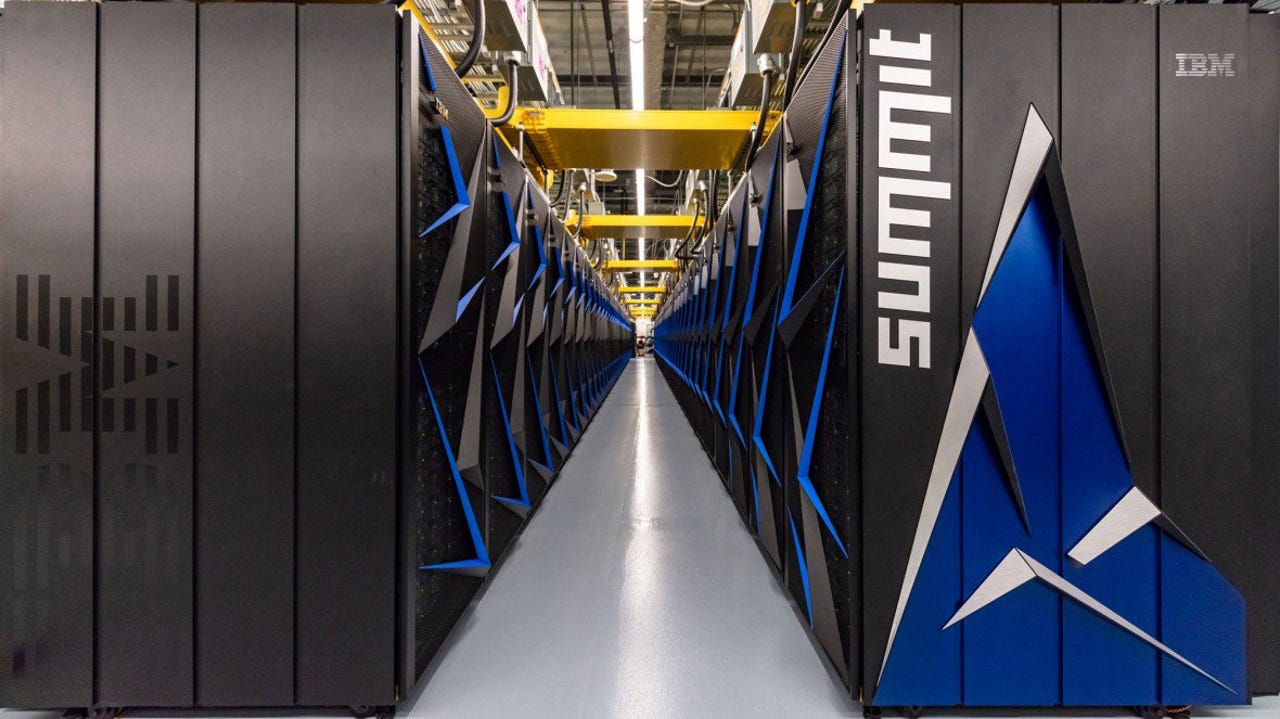US once again boasts the world's fastest supercomputer


The US Department of Energy on Friday unveiled Summit, a supercomputer capable of performing 200 quadrillion calculations per second, or 200 petaflops. Its performance should put it at the top of the list of the world's fastest supercomputers, which is currently dominated by China.
Summit, housed at the Oak Ridge National Laboratory (ORNL), was built for AI. IBM designed a new heterogeneous architecture for Summit, which combines IBM POWER9 CPUs with Nvidia GPUs. It has approximately 4,600 nodes, with six Nvidia Volta Tensor Core GPUs per node -- that's more than 27,000.
Also: The growing divide between work and consumer computing
The last US supercomputer to top the list of the world's fastest was Titan, in 2012. ORNL, which houses Titan as well, says Summit will deliver more than five times the computational performance of Titan's 18,688 nodes.
Summit will be used for research in a range of fields, including high-energy physics, materials discovery and health care.
"Summit takes GPU accelerated computing to the next level, with more computing power, more memory, an enormous high-performance file system, and fast data paths to tie it all together," James Hack, director of ORNL's National Center for Computational Sciences, said in a statement. "That means researchers will be able to explore more complex phenomena at higher levels of fidelity in less time than with previous generations of supercomputer systems."
Previous and Related
IBM warns of instant breaking of encryption by quantum computers: 'Move your data today'
Supercomputing: This project plans one of the world's largest Arm-based supercomputer deployments
A new installation across three UK-based clusters will run a total of 12,000 Arm cores.
Linux totally dominates supercomputers
It finally happened. All 500 of the world's top 500 supercomputers are running Linux.
Supercomputers coming soon to an office near you
Supercomputers are to ordinary servers as race cars are to street vehicles. Burst processing and cognitive applications are examples of tech that will be in the data centers or desktops of tomorrow.
From paper tape to a patched-together Altair 8800, the story of my first computers
In this hustle bustle world of smartphones and Internet of Things, it's hard to remember that there was a time when we weren't all wirelessly wired to the cloud. In this retrospective, David Gewirtz takes us back to a simpler time.